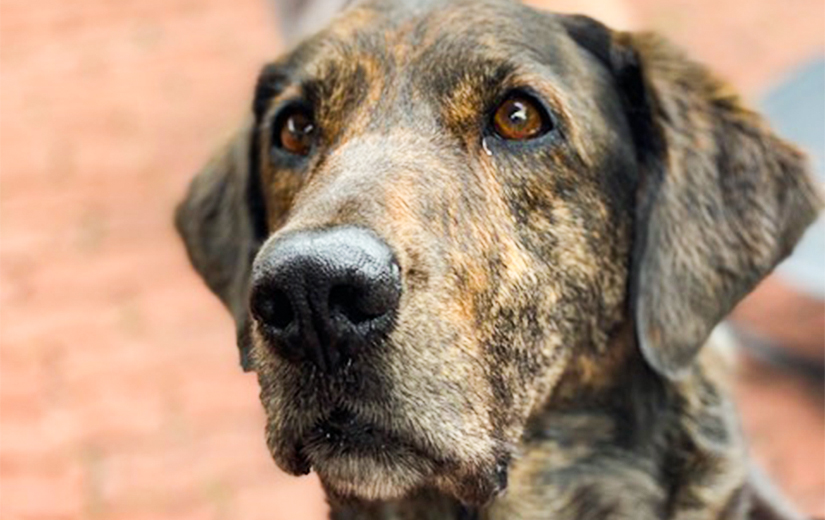Kind Corner: Separation Anxiety in Dogs

A timely Kind Corner about separation anxiety by Saundra Clow, owner and lead trainer at Alpine Dogs. Saundra specializes in treating separation anxiety having graduated from the SA Pro Trainer program.
Let’s get reading!
What is separation anxiety?
Separation anxiety is a panic disorder in dogs that occurs when they are left alone. This panic disorder can be different for each individual dog. Some dogs are fine as long as a person is there with them, while some dogs are hyper attached to one specific individual and the panic sets in when they are separated from that person.
Every dog’s reaction is unique, but the most commonly seen signs of separation anxiety are:
- vocalization (barking, whining, howling)
- destructive behaviour like chewing or scratching doors, walls and floors, often around doorways or exit points and often to the point of self harm
- coming home to find elimination accidents when your dog is otherwise fully housetrained
You may also notice that your dog also picks up on early signs that you are about to leave (maybe you are putting on your shoes or packing your bag) and start to get anxious and follow you closely around the home.
There are other signs of separation anxiety your dog may be showing that are not included here. If you are seeing any worrisome behaviour or a sudden change in your dog’s behaviour, it is always advisable to speak to your vet.

Could it be something else?
Here are some things to ask yourself when working through why your dog may be displaying separation anxiety behaviours. Does your dog watchdog bark out your front window when you are home? Could this be the same type of barking that is happening while you are out? Does your dog take things to chew when you don’t have your eye on them at home? Does your dog have house training accidents on occasion even when you are home? It’s important to consider if your dog shows similar behaviours when you are home, or if these behaviours can be isolated to happening only when your dog is left home alone.
If you are not sure if your dog has separation anxiety, you can set up a camera to record your dog while you are away. This will let you see what your dog does and how they are reacting to being home alone.
Leaving your dog alone
If you’ve never left your dog alone yet, start small and slowly build up to leaving your dog for longer amounts of time. It’s so important to never expose a dog to being alone for longer than they can handle comfortably. You only want to leave your dog alone for the time period that they can stay calm for. It’s so important to never let your dog “cry it out” as this can be really damaging for dogs that suffer from separation anxiety. The fear and panic the dog feels is very real, and the longer they are exposed to that scary event, the more they will fear that event of being alone going forward.
If you are crating your dog, it’s also important that they are relaxed and comfortable in their crate when home alone. If your dog has been destructive in the past due to panic, confining them to a crate can exacerbate their fear and increase the risk of injuring themselves. Crating won’t fix the underlying reason behind the chewing, it only limits the panic to a smaller area. Most dogs actually do better learning to be home alone without the confinement of a crate.
What you need to do, is always ensure you are not leaving them for longer than they can manage, which means your dog is never left alone long enough to cause damage to your home.
Getting help
If you’re worried that your dog may have separation anxiety, do reach out for help from a qualified professional, including your veterinarian. Having a dog with separation anxiety can be daunting, stressful and overwhelming, so getting the right help can be so important. By working with a dog trainer that specializes in separation anxiety training, you’ll have the tools and support needed to succeed. Look for AnimalKind accredited trainers and those who have graduated from the SA Pro Trainer program with Julie Naismith, or CSAT program with Malena DeMartini; both leaders in the field of separation anxiety training.
